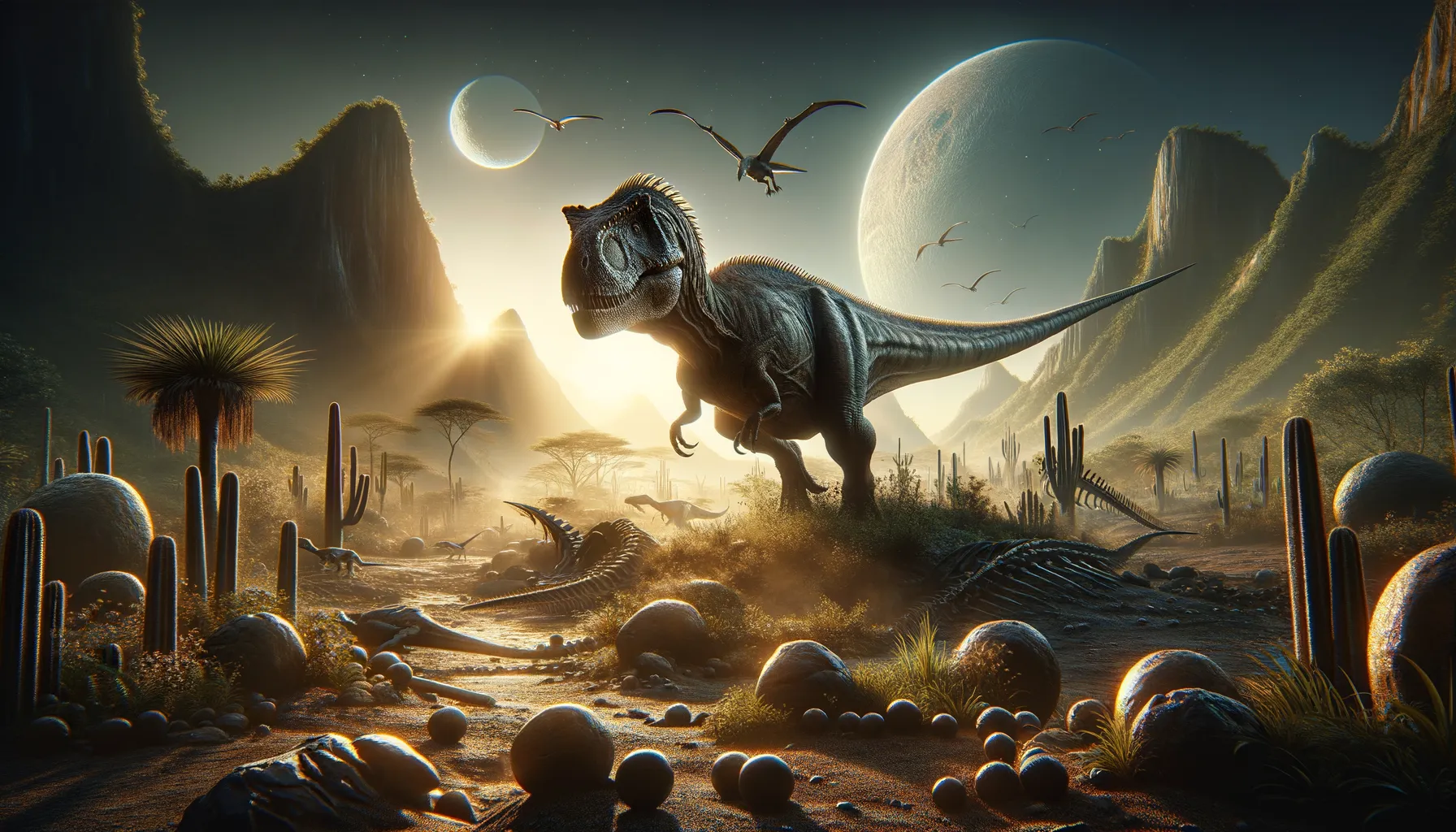
Poekilopleuron
Swift predator of the Jurassic era.
Period
Jurassic
Length
Estimated length of 7 meters.
Height
Around 2.5 meters tall at the hip.
Weight
Approximately 500 to 600 kilograms.
Poekilopleuron was a mid-sized theropod dinosaur that roamed Europe during the Jurassic period. It is known from partial fossil remains, which have provided insights into its diet and behavior. This dinosaur was primarily a carnivore, using its agility and sharp claws to hunt down prey. Despite limited fossil findings, Poekilopleuron offers valuable information about the ecosystem of its time.
Diet
Poekilopleuron was carnivorous, feeding likely on smaller dinosaurs and other animals. It used its sharp teeth and claws to capture and consume its prey.
Hunting
As a predator, Poekilopleuron relied on stealth and agility to ambush prey. Its strong legs suggest a capacity for short bursts of speed during hunts.
Environmental challenges
Living during the Jurassic period, Poekilopleuron faced challenges such as fluctuating climates and competition for food. Periods of drought or wet seasons would influence its food sources. It had to adapt to changing landscapes and availability of prey in its environment.
Speed
Moderate pace, likely agile for its size.
Lifespan
Estimated around 30 years in the wild.
First discovery
First uncovered in 1836 in France by Jacques Amand Eudes-Deslongchamps.
Fun Facts
- Poekilopleuron was a carnivorous dinosaur that lived during the Middle Jurassic period, around 165 million years ago.
- The name 'Poekilopleuron' means 'varied ribs', highlighting its unique rib structure.
- Its fossils were first discovered in Normandy, France, in the 1830s.
- Poekilopleuron is estimated to have been about 30 feet long, making it a fairly large theropod dinosaur of its time.
- Unfortunately, much of the original fossil material was destroyed during World War II, making it a bit of a mystery.
- Despite the loss of many fossils, Poekilopleuron remains an important reference for early theropod studies.
- Poekilopleuron is often compared to other large predatory dinosaurs like Megalosaurus due to its similar size and structure.
Growth and Development
Like many theropods, Poekilopleuron likely grew rapidly during its juvenile stages to avoid predation. Fossil evidence suggests it grew steadily, with size increases fueled by abundant food supplies. Its skeletal structure suggests adaptations for efficient growth and mobility.
Habitat
Poekilopleuron inhabited floodplain regions that provided ample prey. It thrived in areas that offered a mix of open spaces for hunting and dense vegetation for cover. The climate and environment were suitable for sustaining diverse life forms, fostering rich ecosystems.
Interaction with other species
As a predator, Poekilopleuron interacted mostly with prey animals but had competition from other theropods. It may have engaged in territorial disputes or scavenged from larger predators' kills. Fossil evidence suggests it may have lived alongside various dinosaur species in complex ecosystems.
Natural lifespan
Possibly around 30 years in natural settings.
Reproduction
Poekilopleuron was oviparous, laying eggs to reproduce. It is believed that these dinosaurs engaged in some form of parental care, possibly guarding nests against predators. Its reproduction strategy ensured the survival of offspring in variable climates.
Social behaviour
Poekilopleuron may have exhibited solitary behavior more common in predatory dinosaurs. However, it could have formed temporary groups during specific activities, such as hunting or breeding. Social structures were likely influenced by environmental conditions and food availability.
Fossil locations
Poekilopleuron fossils have primarily been found in France, offering key insights into its anatomy and lifestyle. The type specimen discovered in the 19th century remains a significant find for European paleontology. Ongoing excavations continue to refine knowledge about its distribution and ecology.
